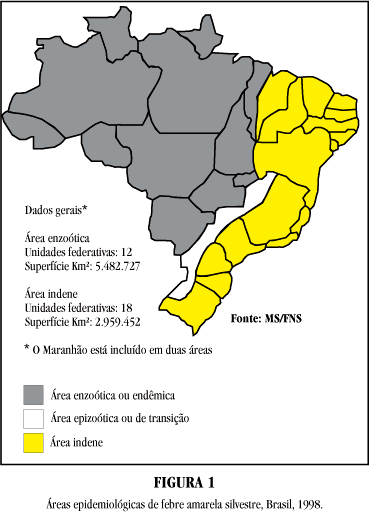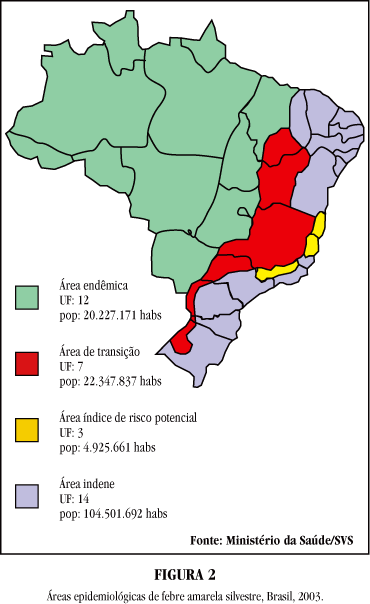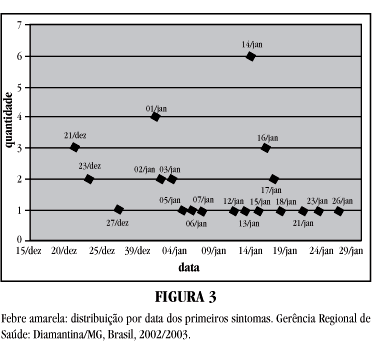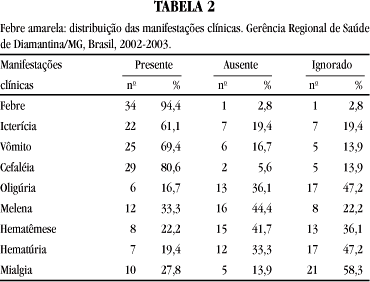This study had the aim of describing an outbreak of yellow fever that occurred in the municipalities under the jurisdiction of the Regional Healthcare Administration of Diamantina, Minas Gerais, between 2002 and 2003, in which 36 cases were notified. This was an autochthonous outbreak of wild-type yellow fever. Failure of vaccinal coverage and low levels of detection of mild cases were found. Among the cases, 33 (91.7%) were male and the age range was from 16 to 67 years. Nineteen (52.8%) of the cases were classified as severe and 12 men (33.3%) died of the disease. All of the cases came from rural areas and presented fever, headache, vomiting, jaundice, myalgia, oliguria and signs of hemorrhage. Surveillance through laboratory tests was the determining factor in diagnosing the outbreak. By describing the epidemiological and clinic findings, this study contributes towards diagnosing and classifying this disease. It was deduced that there is a relationship between deforestation, and outbreaks, and that there is a potential regional risk of yellow fever because of the local development of tourism.
Yellow fever; Outbreak; Epidemiological surveillance; Clinical and laboratory diagnosis









